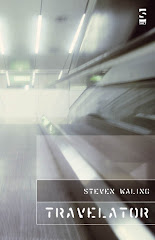I've recently been to two really interesting art exhibitions, both curated by Tony Trehy. The first is Iceland at Bury Art Gallery, and the second is Language + Science at the Mid Pennine Art Gallery in Burnley. That two small towns can have such interesting exhibitions is a real sign of hope, I think.
The Iceland exhibition is based around a contact between Bury and the Safn gallery in Reykyavik (http://www.safn.is/) which is a private gallery with a collection of contemporary art including work by British artists as well as Icelandic artists. In the exhibition, there's a stone circle by Richard Long, Birgir Andrésson, Roni Horn and a wonderful set of etchings by Tacita Dean called The Russian Endings, apparently taken from actual postcards in Russia, which are pictures of things like ships sinking! It's worth the price of the bus ticket for that, but there's some great photography and a real sense of white space in the gallery that makes it very atomospheric.
The Language + Science exhibition is, if anything, even better. Here we have six mainly text-based artists, dealing with the interplay between language and science. One piece struck me: Evolution, by Carolyn Thomson, where the artist, using only the words found in individual chapters of the Origin of Species, has created two new stories (one from each chapter.) It's particularly interesting for me because my latest poem incorporates text from a Penguin 60 extract from Darwin, as well as an older poem of my own.
There's also some great poems by Philip Davenport, incorporating mathematical symbols and scientific words into what are basically a series of break-up poems. Tony Trehy has a wall-based piece, and a piece using blank canvases on the four sides of which he has written a poem, again incorporating scientific language. Shaun Pickard has one of his pieces incorporating descriptions of birds, there's a really interesting light piece, and a film of Hester Reeve reading the whole of Frankenstein while sitting on Mary Shelley's grave.
Both exhibitions seem to be exactly the right size. The second is more interesting to me as an increasingly more innovative poet, because of the use of language. They are all artists who are not afraid of using words for more than their representational uses. I was quietly inspired by this exhibition. It won't turn me into a visual artist, but it will help me to remember that words can be as plastic and abstract a medium as paint or marble.
I hope that at least some of my readers will make an effort to see these exhibitions, as I think they deserve to be seen. Small art galleries in small towns often put on splendid exhibitions that are not well-seen, and I think it's important to support them if you can.
A statement about my mother who has died
2 months ago
